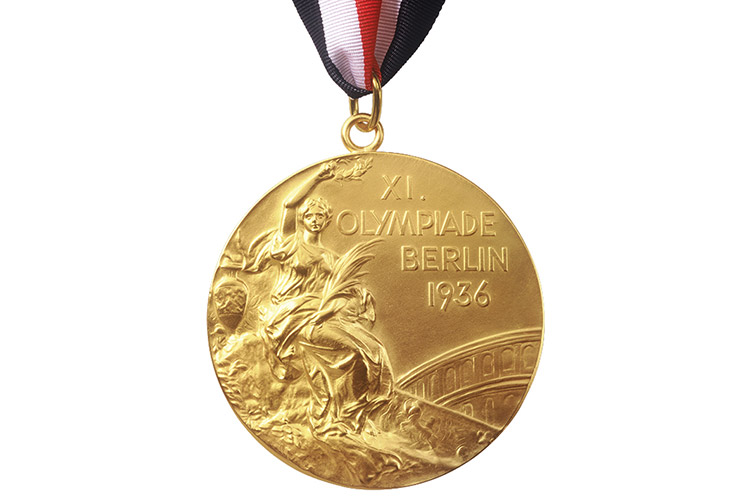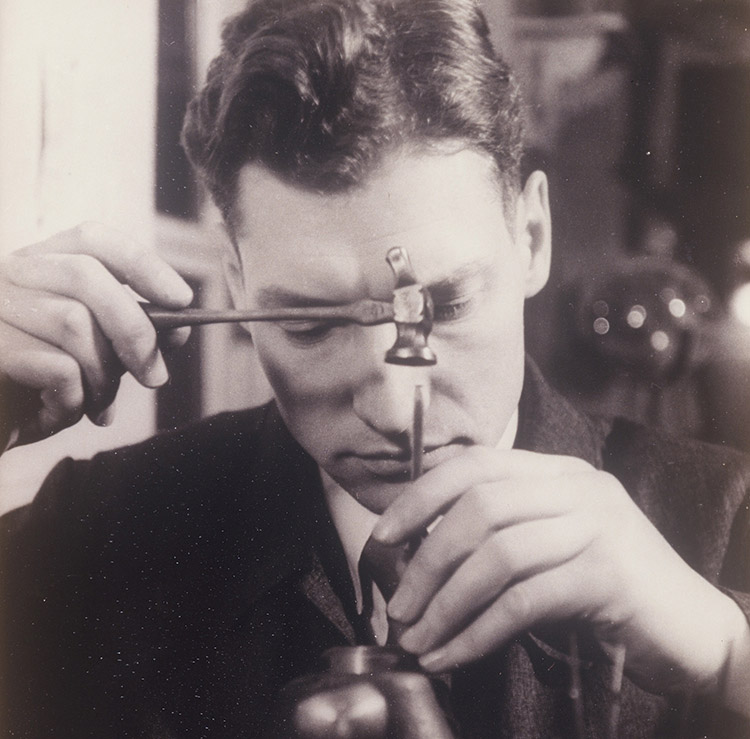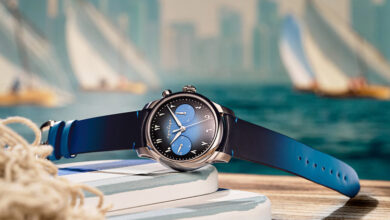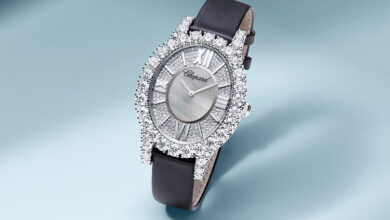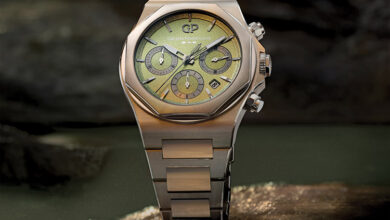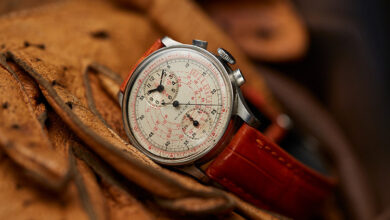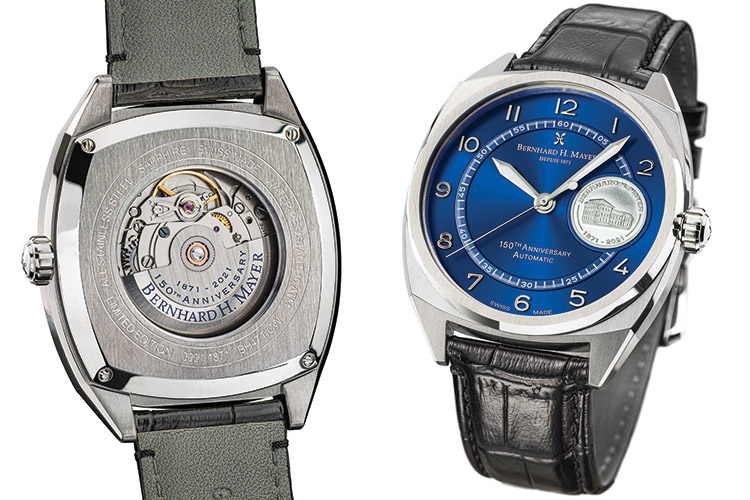
With its roots in the small German town of Pforzheim since 1871, the Mayer name was renowned for crafting distinctive commemorative medals for European royalty and nobility. During the early 1900s, the founder Bernhard H. Mayer was captivated by pocket watches, a status symbol of the time, that were inlaid with precious gems. He developed a passion for engraving these pocket watches, and this was the beginning of brand’s entry into the world of watchmaking
Today, the marque is known for distinctive timepieces that embody 150 years of expertise and heritage in jewellery and watchmaking. From the bold PowerMaster series to the timeless Le Classique, the Mayer brand is on a mission to create beautiful pieces made in the heart of the watchmaking industry. The 150th Anniversary combines the brand’s numismatic and horological expertise to present the world with a stunning collection. Each of their Swiss-Made watches is designed to appeal to both watch enthusiasts and luxury purveyors alike, and the brand aims to deliver watches that bring joy to the wearer.
Part of the Federation of the Swiss Watch Industry (FH), the brand ensures that all timepieces are made according to the Gold Standard of the watchmaking industry, and all their watches feature the “Swiss Made” Label. Clients can rest assured knowing that each watch is assembled carefully by a master craftsman in their Swiss watch workshop.
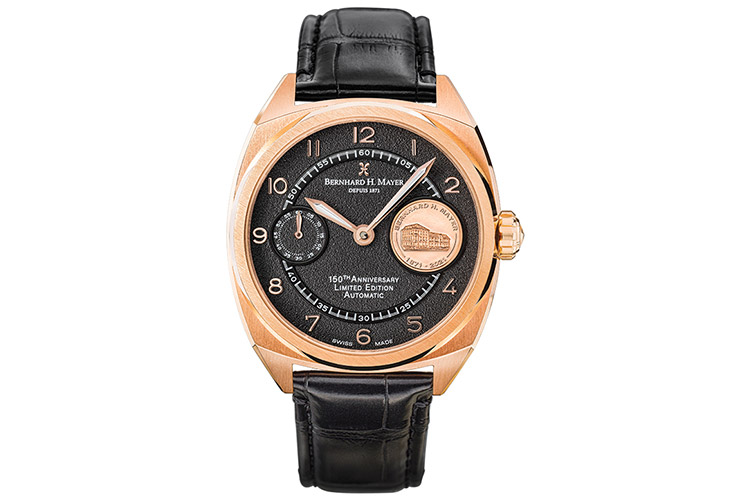
Chronology
1871 – Bernhard H. Mayer, a 28-year-old talented metal engraver and entrepreneur, sets up his workshop in the small German town of Pforzheim – a town that would come to be known as Goldstadt, or the City of Gold, the centre of Germany’s jewellery and watchmaking industry
Late 1800s – The Mayer name becomes synonymous with high precision craftsmanship in precious metal, leading to their first contract to create commemorative medals for European royalty and nobility. By 1900, the Mayer brand is crafting medals for Royal Houses, central banks and governments of Greece, and South American countries
1900 – Bernhard H. Mayer’s work receives rapturous attention at the World’s Fair in Paris. A medallion commemorating the new century wins a silver medal, propelling the Mayer name to the global stage
1901-1930 – Mayer’s son Rudolf takes over the family business during a time of great prosperity in Germany and begins international expansion. He develops a fascination for pocket watches, made of gold and silver and inlaid with precious gems. He uses his skills as an engraver to begin intricate engraving on pocket watches as a hobby, thus laying the foundation for the Mayer brand in the Swiss watch industry. World War I and the subsequent economic crisis takes its toll on the family business but they recover sufficiently by the early 1930s
1936 – The Olympics are held in Berlin for the first time, with the House of Mayer as the exclusive manufacturer of gold and silver medals for the Summer and Winter Olympics. This is the year Jesse Owens famously wins four track and field Gold medals
1937 – The World’s Fair is held in Paris for the last time before World War II. The House of Mayer wins a Gold for their creation
1940-1960 – The bombardment of Pforzheim during World War II leaves the Mayer family’s factories and workshops in ruins. With persistence and dedication, the family goes on to rebuild within 15 years
1961 – The Mayers are back in full force with a new workshop and renewed energy. The House is commissioned to create commemorative medallions featuring Charles de Gaulle and Konrad Adenauer, when the two heads of states visited each other’s countries to improve the Franco-German rapprochement
1980s – The Mayer brand begins its venture into the niche market of coin watches featuring a coin embedded in the watch face, serving as commemorative and symbolic timepieces. This proves to be an immediate hit, beginning a new chapter for the brand
2000s – The Mayer brand moves its base to Biel/Bienne in Switzerland, home to many prestigious watchmakers and horological advances
Today – Bernhard H. Mayer is known for producing watch collections that exemplify the Mayer family’s passion for quality – a tradition of excellence that is now celebrating its 150th Anniversary
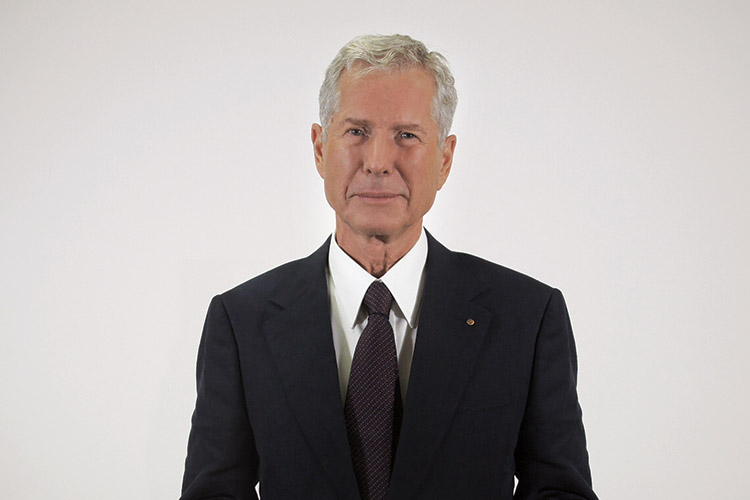
150th Anniversary Collection
The 150th Anniversary Collection watches are designed as an ode to the Mayer brand’s rich history and modern sensibilities. The collection features a special commemorative coin on the watch face at 3 o’clock, displaying the iconic Mayer factory building in Pforzheim, pre-World War II.
Available in 18K Rose Gold and Stainless Steel variants, this limited edition watch is designed with the Bernhard H. Mayer legacy in mind – embodying a passion for quality and tradition. Both editions contain an automatic movement and a see-through caseback showcasing a special 150th Anniversary BHM logo on the rotor.
The 18K Rose Gold version features a black sandblasted dial that contrasts beautifully with the rose gold applied indexes, and provides a wonderful backdrop for the stunning 150th Anniversary 18K rose gold medal at 3 o’clock. A subdial at 9 o’clock marks the passing of the seconds. The 18K Rose Gold edition is powered by the legendary Unitas 6497-1 movement, with a unique modification. It features a special automatic winding system and a specially decorated oscillating weight to mark the Bernhard H. Mayer 150th Anniversary milestone – all of which are beautifully showcased through the exhibition caseback, which also shows the engraved serial number of the limited edition.
The deep hue of the royal blue sandblasted dial of the Stainless Steel edition is once again a beautiful stage on which the dance of hours and minutes mark the passing of time. Once again, the 150th Anniversary stainless steel medal takes centre stage at 3 o’clock. Unlike the 18K Rose Gold version which features a small seconds, the Stainless Steel variant has the central hours, minutes, and seconds.
